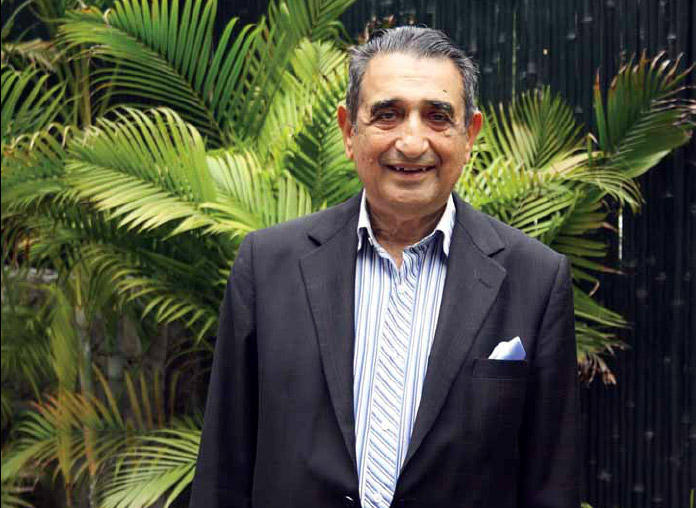IT was sometime in the summer of 1985. Surrinder Lal Kapur, the 1960-batch IAS officer, the then Financial Commissioner (Taxation) in his home state, Punjab, was in Srinagar to participate in a meeting of sales tax and excise officers of the northern zone. He was introduced to a young IAS from Jammu & Kashmir, Sham Singh Kapur. Sham was Commissioner (Excise and Taxation) in Srinagar. He had mongoloid features and reminded Lal of somebody in Spiti, a sub-division in Punjab then (now it is part of Himachal Pradesh), where he had served as Sub Divisional Magistrate (SDM) for close to two years in 1963-64.
“Are you Dharampal’s son?” he asked the young civil servant. Dharampal (a name he used before people from outside Lahaul-Spiti. Locally, he was known as Rigzin Chewang) was an employee in the SDM’s office during Lal’s posting in Spiti. When the latter replied in the affirmative, Lal was even more flummoxed. “How come your surname is Kapur?” he enquired. Sham’s reply was an extremely pleasant surprise for him. “My father adopted the name of an SDM who did some very good work in our sub-division.” Sham Singh Kapur, whose family had probably migrated from Pakistan during Partition, retired in April 2011 as Chief Secretary of Jammu & Kashmir.
During his nearly two-year-long tenure in Spiti, which was his second posting as SDM (he cut his teeth in Pathankot in 1962), Lal claims to have done some innovative work in the sub-division. He says he persuaded the government to open a boarding school in Manali for children of Spiti because the sub-division lacked good schools. “Schools in those days had 30 to 40 students and would run with a single teacher,” he recollects. Lal says he even forced the doctor of a local dispensary to return to Spiti from Kullu. “The doctor would play cards the whole day in a club in Kullu. I threatened him with arrest if he did not report to his place of duty,” he reminisces.
Lal hit newspaper headlines in July 1988 after an inebriated KPS Gill, the then Director-General of Police (DGP) of Punjab, misbehaved with IAS officer Rupan Deol Bajaj at a party at his residence
Lal also served as Deputy Commissioner, Patiala, Joint Commissioner (Excise), Director (Public Relations) and Secretary to the Punjab Governor, late Dharma Vira. Before shifting to the Centre on deputation in 1979, he also worked as Secretary (Industries and Public Relations) and Commissioner (Excise and Taxation), Patiala. He went back to Punjab in 1985.
During his stint as DC, Patiala, Lal helped people in Samana, a town in the district, to set up a private college. The college organised a special function last year to honour him.
Lal hit newspaper headlines in July 1988 after an inebriated KPS Gill, the then Director-General of Police (DGP) of Punjab, misbehaved with IAS officer Rupan Deol Bajaj at a party at his residence. Lal and his wife were prosecution witnesses in the case, which resulted in Gill’s conviction 17 years later. Lal, then Financial Commissioner (Home), had submitted a report on the incident to the then Governor, Siddhartha Shankar Ray. Since the incident took place in the lawns of his official bungalow in Chandigarh, Lal apologised to Deol twice. The latter, along with her husband BR Bajaj (also an IAS officer), still filed a case against Gill.
The ‘unfortunate’ incident hogged the media headlines for several years. So much so that when Lal was working with the United Nations Industrial Development Organisation (UNIDO) and was in Lagos, Nigeria, a Sindhi couple, who hosted a dinner for him, showed him a copy of India Today magazine and enquired, “Are you the same SL Kapur?”
Lal served as the Home Secretary of Punjab till 1991, when the state was reeling under terrorism and was under President’s Rule. In 1990, during a profiling exercise of terrorists, he discovered that 90 per cent of the terrorists were from Patti region of Tarn Taran district. “I visited Sur Singh, a village a dreaded terrorist came from. The terrorist’s father begged me to protect his other son from going astray and joining his brother,” he remembers. The unusual request gave him an idea: why not provide employment to youth whose elder brothers had taken up the gun and thus finish off terrorists’ nursery? He bounced the idea off the then Governor, NK Mukherjee, but the latter was not receptive. When Mukherjee was replaced by Virendra Verma, Lal revived the proposal. Verma, for a change, gave him the goahead.
Lal says he decided to train youth by forming a task force under a retired major general as commandant. He found space in Kapurthala for the training institute. According to him, the task force trained tens of thousands of youth for employment in the army and paramilitary. It also imparted skills to youth for other jobs.
In 1991, Lal came to Delhi on deputation. In 1995, the sexagenarian retired as Secretary (Small Scale Industry and Food Processing). In the same year, he was appointed member of the Board for Industrial and Financial Reconstruction (BIFR), an agency under the Union Finance Ministry. He demitted the agency four years later.
In 2005, he became a Director on the Yes Bank board. Three years later he got promoted to the Chairman’s post and played a role in the dispute between bank promoters Rana Kapur and sister-in-law Madhu Kapur. He retired from the private sector bank in 2013, marking his third superannuation from nine-to-five jobs.
But has Lal really retired? The man from Jalandhar claims he continues to chair Yes Bank Foundation.


























































